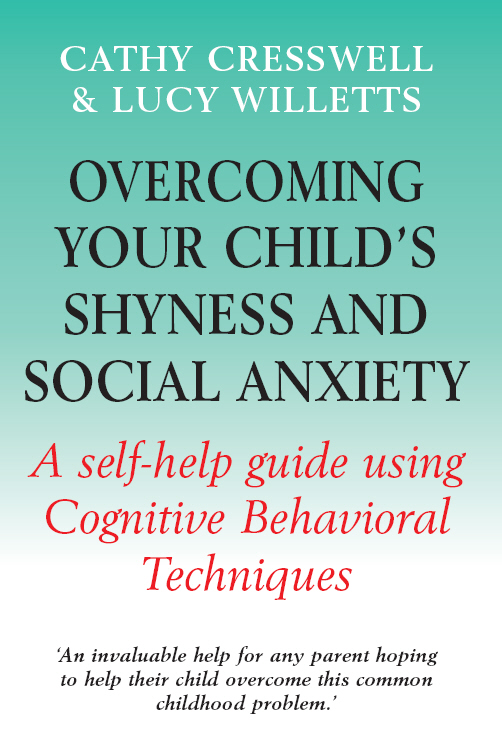 As a teacher I was interested to read how the techniques of cognitive behavioral therapy (CBT) can be used to help overcome children’s shyness and in more extreme cases social anxiety. Although a useful book for teachers and there is a brief guide on how to help these children in the classroom, Overcoming Your Child’s Shyness and Social Anxiety is essentially a book for parents.
As a teacher I was interested to read how the techniques of cognitive behavioral therapy (CBT) can be used to help overcome children’s shyness and in more extreme cases social anxiety. Although a useful book for teachers and there is a brief guide on how to help these children in the classroom, Overcoming Your Child’s Shyness and Social Anxiety is essentially a book for parents. CBT works on the idea that how we think, feel and behave are all closely linked and if we can effect change on how we think and feel, then this in turn will have an effect on what we are able to do in given social situations.
In practical terms, if anxious children are worried that other pupils are going to think they are no good at PE and make fun of them in the lessons, they need to consider whether this has actually happened, has it happened to any of their friends and, if so, how often?
Anxious children need to realise, that the chances of pupils being made fun of are relatively low and if it does happen, friends would support them and likewise they would support their friends in similar instances. If anxious children are able to change their ways of thinking like this, then they can develop coping strategies to deal more confidently with stressful situations.
Overcoming Your Child’s Shyness and Social Anxiety is divided into three parts. In the first section shyness and social anxiety are explained, together with how they manifest themselves in the cases of individual children. The second part is a very practical guide on how strategies can be developed to help. The third section deals with other problems that may face the socially anxious child eg not wanting to attend school, the selective mute who won’t speak in public, and the relevance of relaxation.
Two ideas struck me as particularly significant. Firstly it was the practical suggestion for parents, by which an ultimate goal is set for shy and socially anxious children and, in order to achieve this goal, plans need to be broken down into smaller steps and the children’s progress rewarded along the way.
Secondly it was the idea of giving children a certain degree of independence to face social situations and develop coping strategies. As a parent, I understand perfectly that we want to protect our children from stressful situations and this must be even more daunting for the parent of a shy and socially anxious child. However by removing the child from the problematic situation e.g. the mum who takes her son out of the toddler group because he finds it hard to socialise would do better to keep him there, thus enabling the boy to develop survival strategies on his own.
I found Overcoming Your Child’s Shyness and Social Anxiety easy to read and jargon-free, although at times a little long-winded and not concise enough. For that reason I liked the key points summarised at the end of each chapter enabling the reader to skim certain sections. The book can either be read in its entirety or “dipped into” as and when needed.
However I would recommend a parent of a shy and socially anxious child to read the whole book, in particular in part 2, as it sets out different steps and practical approaches, which need to be fully understood and followed through.
Overcoming Your Child’s Shyness and Social Anxiety by Lucy Willetts & Cathy Creswell is published by Robinson at £9.99.
